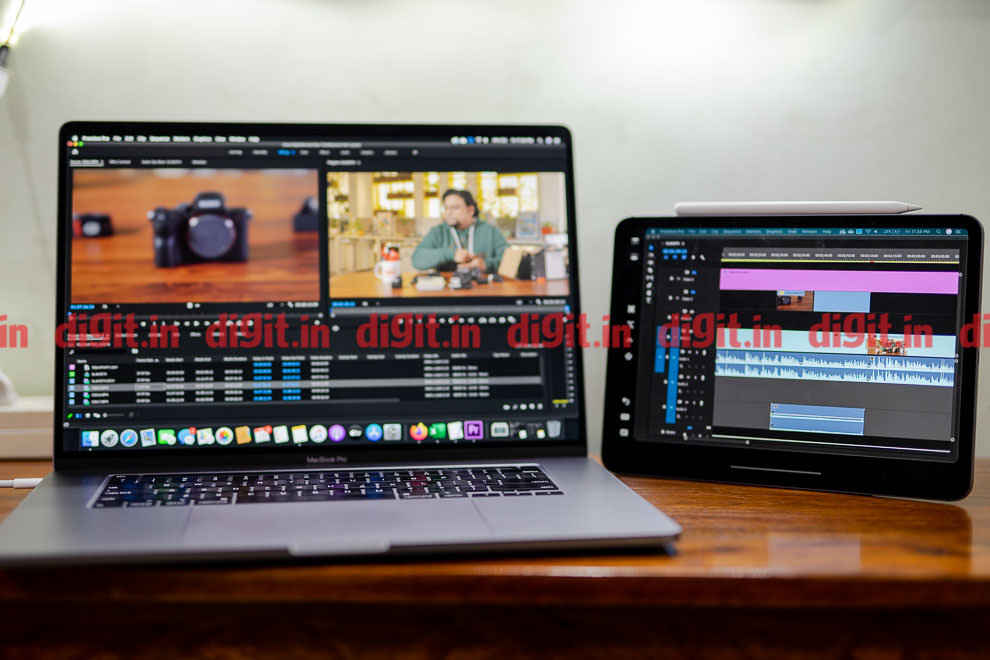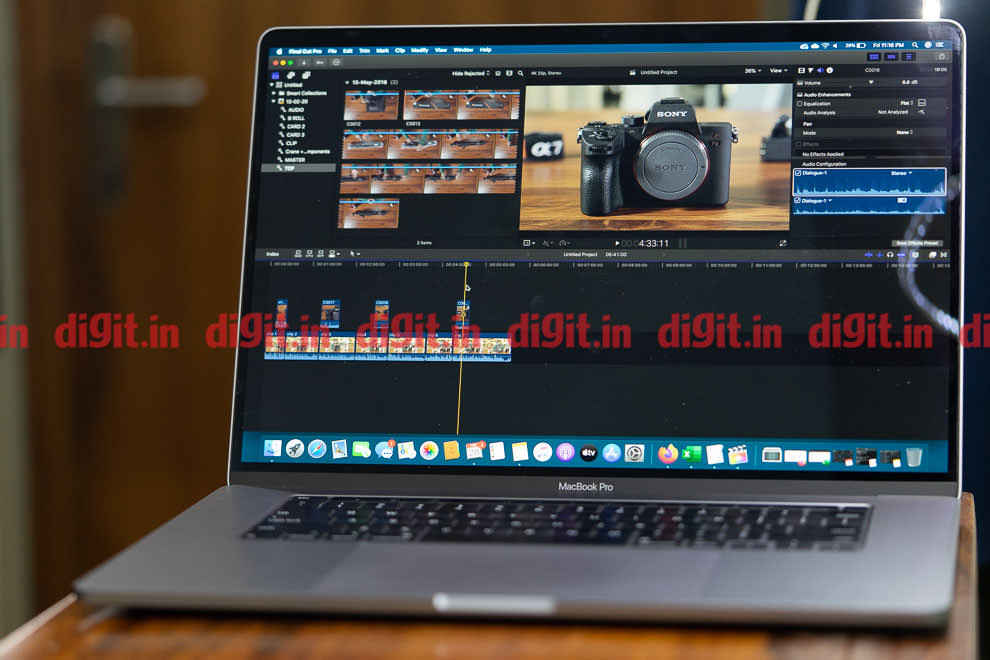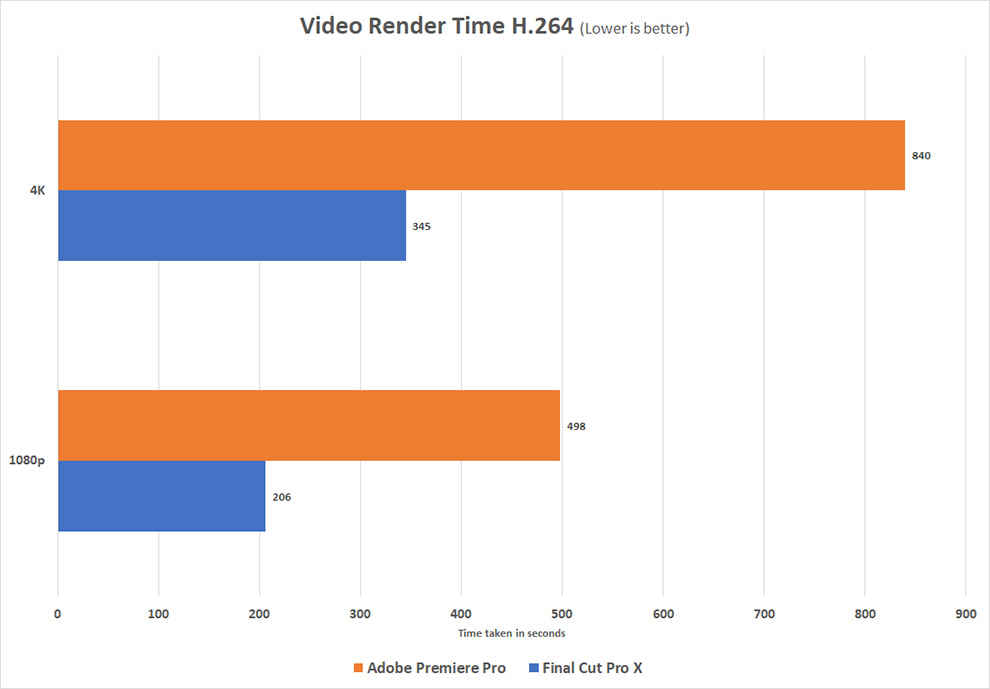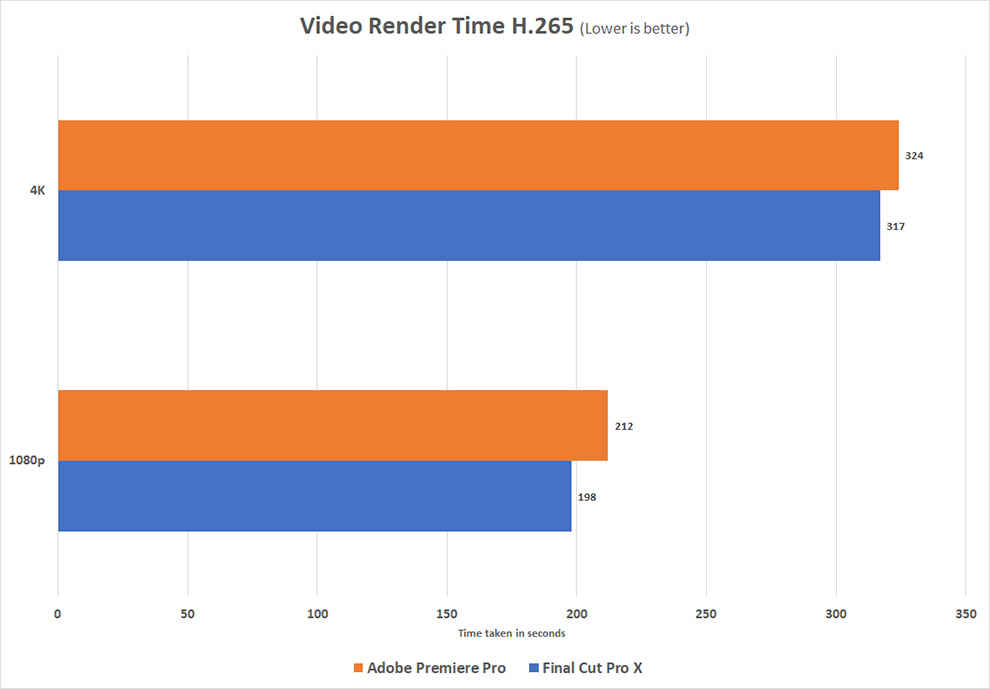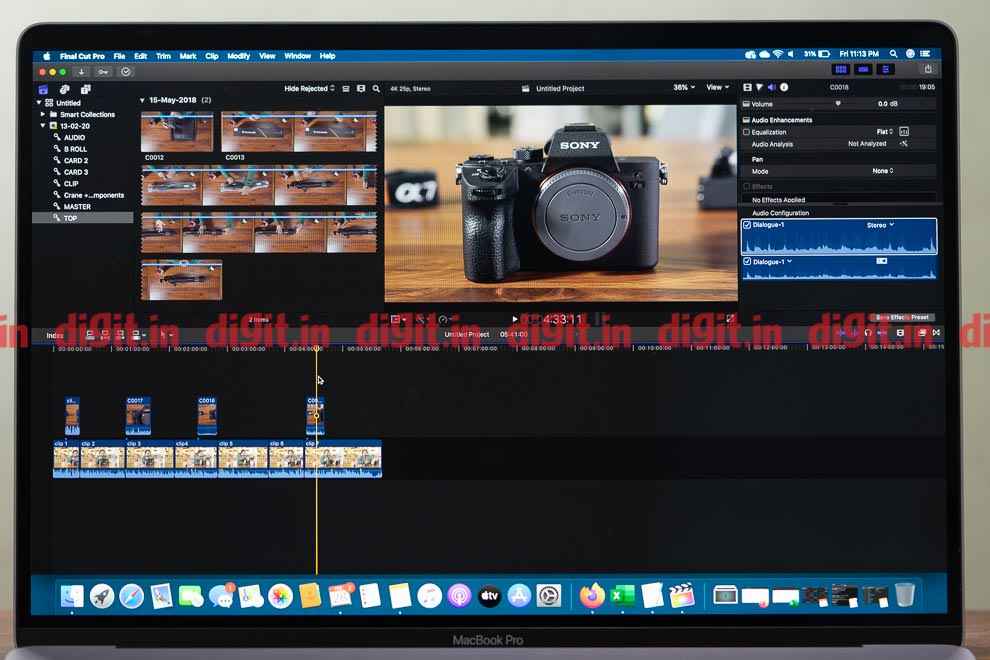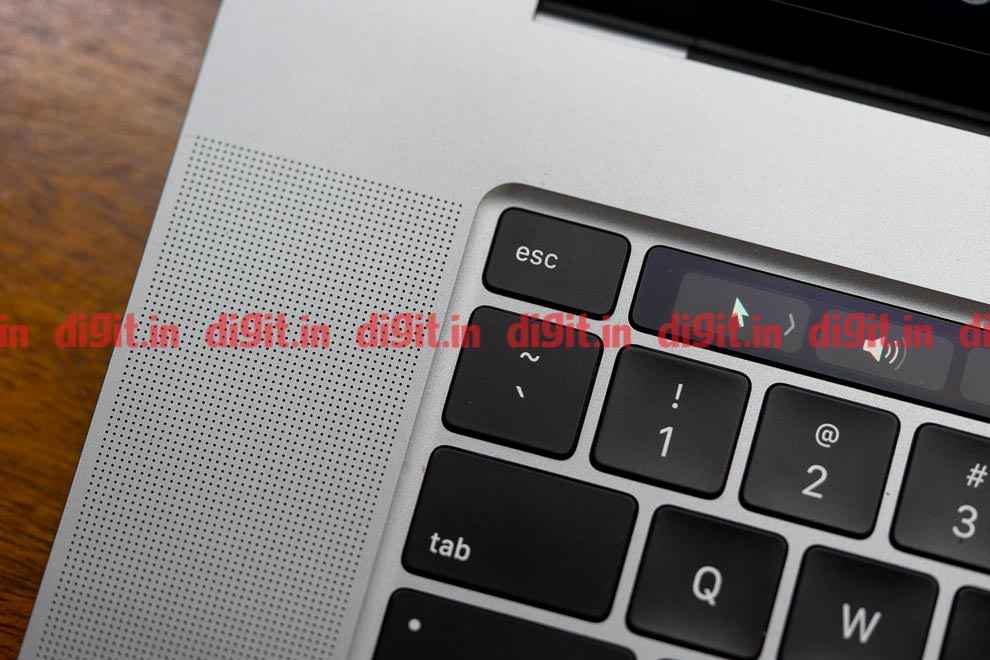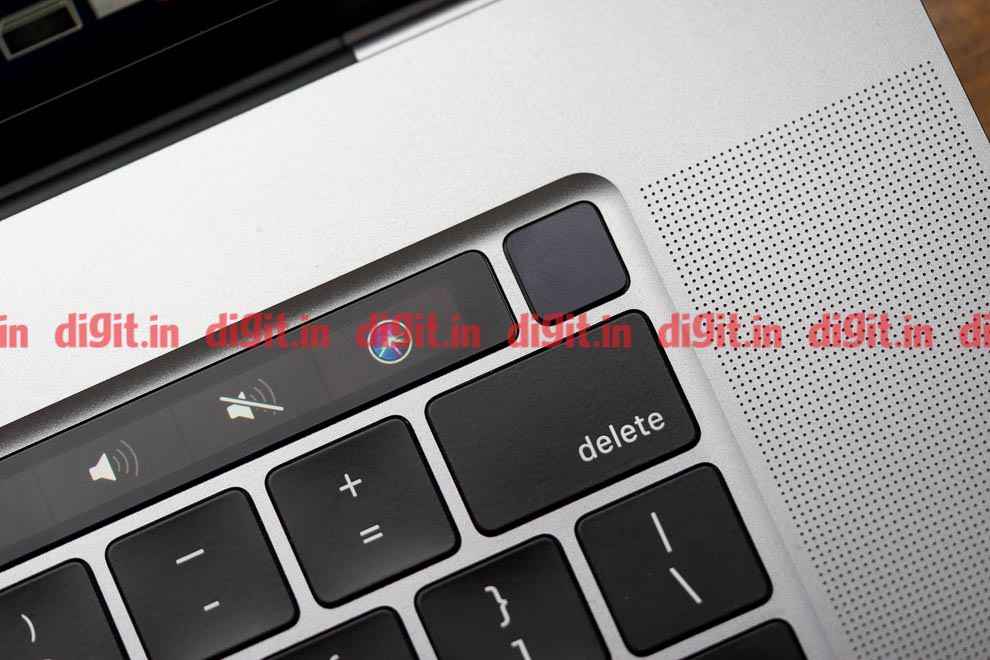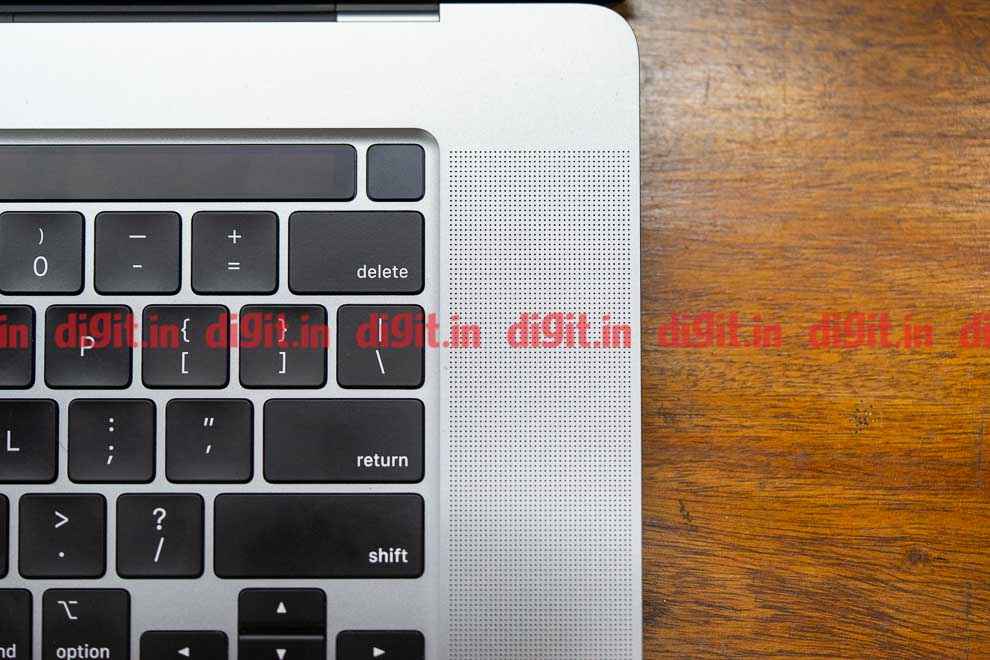Apple MacBook Pro 16-inch Review : The definitive choice for creative professionals
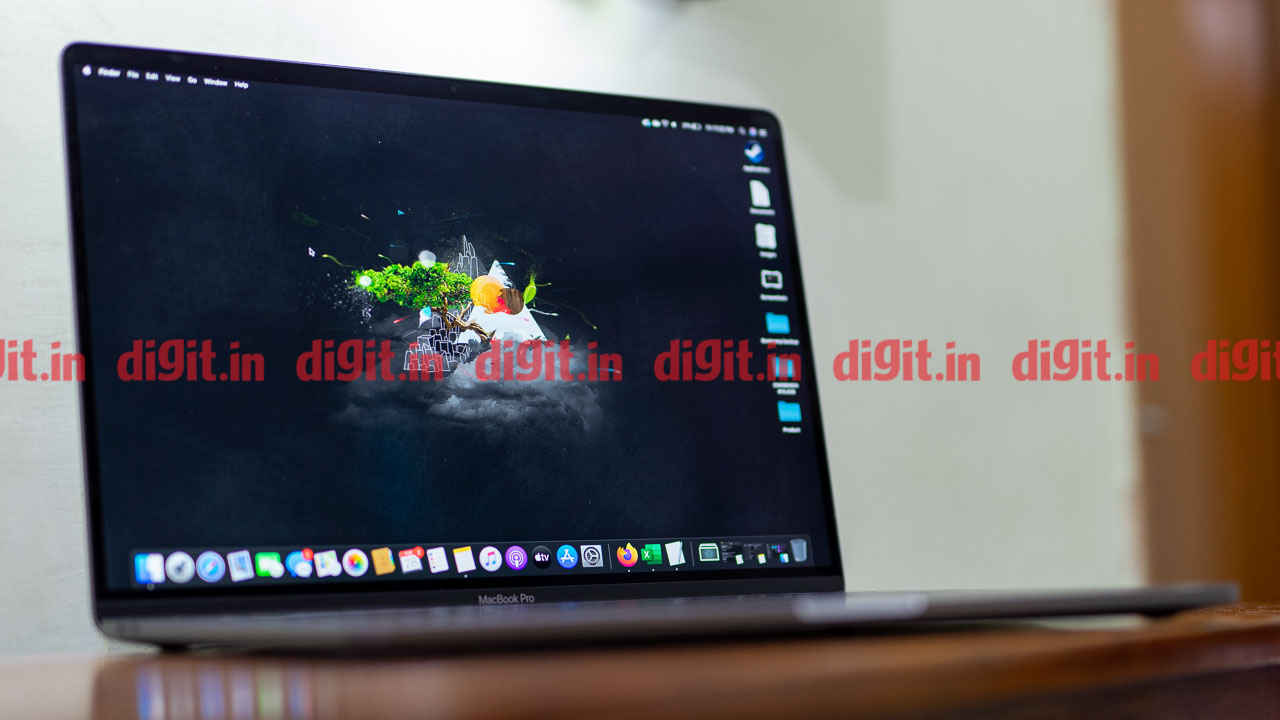
The 16-inch MacBook Pro has been designed from the ground up, showing ample evidence that Apple has been listening to its creative professionals. It has a bigger, 16:10 display with a higher resolution panel capable of producing both sRGB and DCI-P3 colour profiles accurately. Perhaps the most impressive is the reworking of the thermals, which allows the Core i9-9880H to run at its higher clock speeds for longer, leading to impressive performance, especially under prolonged, sustained loads such as exporting hundreds of super-high-resolution RAW files to JPEG using Adobe Lightroom. For film-makers, FCP X leverages Intel's Quick Sync and the T2 chip to yield impressively video editing and noticeably fast export times, even with 4K files. The new machine manages to tick off all the necessary boxes for creative professionals, making it super easy to recommend.
The MacBook Pro 16-inch has some pretty big shoes to fill, those of the 17-inch MacBook Pro which Apple discontinued back in 2012. The laptop had been rumoured for a very long time, with many people looking forward to it being real. Well, the laptop is finally here and we’ve been putting it through its paces in our labs to see whether the wait was worth it.
Performance
The review unit of the MacBook Pro that we received is powered by a 9th generation Intel Core i9-9880H processor. This eight-core CPU has a rated TDP of 45W, a base clock of 2.3GHz and a boost clock of 4.8GHz. In addition to the processor, there is also the AMD Radeon Pro 5500M discrete graphics with 4GB of GDDR6 memory along with 1TB storage and 16GB DDR4 RAM. This configuration currently costs Rs 2,39,990 and is available off the shelf at various Apple authorized retailers both online and offline.
There aren’t a lot of benchmarks available for MacOS, but the few that do test the system’s performance tell a very promising story. On GeekBench 5, the MacBook Pro racks up a score of 1032 for single-core and 6355 for multi-core performance. On Cinebench 20, the MacBook Pro scores 3155 points for the CPU and on Cinebench 15, the scores are 1279cb for the CPU and 114.2fps for OpenCL. The scores by themselves don’t mean much, but where the 16-inch MacBook Pro really flexes its hardware is with respect to creative workloads. We benchmarked the machine using FCP X, Adobe’s suite of apps for photo editing, video editing and even some VFX work.
Sidecar allows the use of an iPad as a second screen
Photo Editing
We loaded up a few hundred RAW files from a Nikon D850 onto the MacBook Pro’s internal drive to see how the machine would handle the load when processing them in Lightroom. The 45-megapixel RAW files are large enough to bring most systems to a crawl, not just in the develop module, but also while exporting them to disk. We run the export in batches of 50 files, 100 files and 500 files. On the first run of 50 files, the MacBook Pro manages to complete the process in 1 minute 16 seconds, while 100 RAW files took 2 minutes and 41 seconds. The monstrous task of exporting 500 high-resolution RAW files to JPG in full quality was completed by the machine in 12 minutes and 48 seconds. For comparison sake, the Dell XPS 15 powered by the Core i9-9980HK processor and sporting 32GB of DDR4 RAM completed the same export cycle in 1 minute 7 seconds, 2 minutes 4 seconds and 19 minutes and 46 seconds for the 50,100 and 500 file export respectively. Interestingly, the XPS 15 is faster to export the 50 and 100 RAW files but falls terribly behind in the 500 file export task. On the MacBook Pro, we noted that during all export sessions in Adobe Lightroom, the clock speeds on the MacBook Pro didn’t drop from the advertised speeds. The single-core boost clock as recorded by Intel Power Gadget stayed between 4.4GHz – 4.8GHz while all other 7 cores operated at an average of 2.3GHz, peaking occasionally at 3.0GHz. The main takeaway from this exercise is that the i9-9880 on the MacBook Pro did not throttle, even when put under full, sustained load for a prolonged period of time.
Exporting a number of 45megapixel RAW files
Video Editing
Apple’s products are extremely popular amongst the video community, so it is only natural to test out the new MacBook Pro 16-inch within that environment. On the 16-inch MacBook Pro, users not only get to leverage Intel’s QuickSync technology, but also the dedicated T2 chip’s video encode-decode capabilities. We used both FCP X and Adobe Premiere for this leg of our testing. We loaded up a project in both the video editors. The project was a 5-minute timeline consisting of footage shot in 4K. We ensured to apply the same transitions and LUT files to the project so as to make the two versions identical. It took FCP X a little over 5 minutes to export the 5-minute 41-second 4K video to a 4K, H.264 file and 3 minutes 26 seconds to render the same project in 1080p. Premiere Pro took 14 minutes to export the same project out in 4K, H.264 and 8 minutes 14 seconds to do the same in 1080p. Interesting. All necessary files were stored on the MacBook Pro’s internal 1TB drive for the fastest read/write performance.
We observed that the difference in export times was attributed to the CPU clock speeds. FCP X while exporting video hits the processor with a sustained, but lower load so as to not push it to its TJ-Max, allowing it to sustain its boost clock for longer. Premiere on the other hand slams all eight cores with all its demand, resulting in the CPU throttling in under a minute. In fact, during the render process from Premiere, we noted the CPU clocks dropping as low as 1.8GHz on all cores! This was consistent behaviour regardless of whether the render engine was Metal, OpenGL (deprecated) or Software. And yes, switching to Adobe Media Encoder didn’t improve render times either.
Where things look better for Premiere Pro however was when the same file was encoded in the H.265 container. When exporting the same file in 4K and 1080p, but using the H.265 codec, the export times matched that of FCP X, so it could just be an issue with the way Premiere is handling the h.264 codec. While render behaviour may have been a concern on Premiere, the fault lies with the program and not with the hardware. The hardware on the MacBook Pro is powerful enough to be able to scrub through a 4K timeline without having to lower the preview quality or generate proxies. That’s quite an impressive feat, especially if you’re a Premiere Pro user.
It is obvious that the best way to squeeze the most out of the MacBook Pro’s hardware is to use Apple’s own suite of editing tools. However, Adobe or even DaVinci users need not lose heart. Adobe’s slow render performance for H.264 encodes can easily be fixed through a software update, since its only a matter of how Premiere loads its operations onto the CPU. We’ve seen Adobe Lightroom do the same thing, by intelligently loading the CPU, Lightroom maintained the Core i9’s boost clock for a lot longer, allowing the machine to have impressively fast render times.
Display
The Apple MacBook Pro features a 16-inch display with a 16:10 aspect ratio. Compared to the 15-inch model, you end up with “more screen” both horizontally and vertically, more so vertically. Personally, I’m a big fan of the 16:10 aspect ratio as it allows more tools in my editing software to be visible at the same time. The display has a resolution of 3072X1920, with a refresh rate of 60Hz and 100 per cent DCI-P3 coverage. The display clocked a maximum brightness of 485 lux on our lux meter. The display maintains the consistency in brightness across all four corners, with our lux meter recording the same brightness in all four corners and the centre.
Right out of the box, the display is calibrated to accurately display the sRGB colour gamut, with switching to DCI-P3 being rather simple. Apple allows users to change the display colour profile from the display settings option, but, if you’re someone who deals with multiple colour spaces Apple has an elegant solution.
While most content in the world still exists in the sRGB colour space, for content creators who are working with 10-bit colour (HDR) video, there’s a big relief. When working on an HDR project in FCP, you can switch between sRGB and P3 colour spaces in the FCP preview window with a single shortcut. While the shortcut only works in FCP, the implementation behind it is what’s impressive. You can work in the P3 colour space, without switching the colour space of the entire system. On a Windows-based machine, you have to change the entire system’s colour space before your editing software can display the colours properly, causing colours everywhere else to be displayed wrong. Apple’s MacOS allows for the display properties to be defined on a per-application basis, which makes it super convenient to work with mixed colour spaces.
The 16-inch display with 3072×1920 resolution is colour-accurate in the sRGB colour space
Needless to say, the display on the 16-inch MacBook Pro is not only versatile but also offers enough in terms of colour gamut, brightness and real estate for most creators to be adequately comfortable with. The only thing that could have made the display better is a matte coating, even though the glossy display does a good job of suppressing reflections.
Keyboard, Trackpad and Touchbar
One of the biggest criticisms of Apple’s laptops in the last few years has been the negligible travel on their keyboards. With the new MacBook Pro, Apple seeks to address that concern. The new keys have not only more travel (1mm) but also new scissor switches. These are the same switches that are used in the Magic Keyboard. The new keyboard is definitely more comfortable to type on, but the keys are still very soft and don’t offer enough feedback. They definitely take some getting used to, even if you’re coming from an older MacBook. The arrow keys have also had their placement changed, going back to an inverted-T layout which was something users had been asking for.
The TouchBar has also been redesigned, with the escape key and power button being separated from it. Its definitely nice to have a dedicated escape key as it comes in handy when you need to force close an application, but the TouchBar won’t give you the option.
Lastly, there’s the glorious trackpad. Apple’s laptops hands down have the best trackpads in the business and with the new 16-inch MacBook Pro, it only gets better. All movement and gestures are recognized flawlessly, and each click delivers firm feedback. It also helps that the trackpad on the new MacBook Pro is larger too, making tasks like video and photo editing feasible.
Sound
The speakers on the new MacBook Pro are definitely another impressive thing about this new laptop. Not only are they loud, but they’re also very clear, even at their loudest. Each speaker grille hides a pair of tweeters and a sub-woofer, for a total of 6 speakers. The sub-woofers employ force cancellation, a method through which the vibrations generated by each sub-woofer is cancelled out by those of the other. This leads to slightly deeper bass, all without any noticeable rattle. While the experience may not be audiophile-grade, the speakers offer very impressive stereo separation (for content that’s been mastered properly), which tends to be most obvious while watching movies. Regardless of the genre of movies, the speakers will deliver good, clear and loud sound.
Each side of the MacBook Pro houses a set of tweeters and a sub-woofer for great, immersive sound
Battery Life
Apple’s computers have always had a good track record with it comes to battery life and the new 16-inch MacBook Pro continues that tradition. Packing a 100Whr battery, Apple’s flagship laptop lasted 7 hours and 41 minutes of normal, office use. This includes browsing the web and writing plenty of stories, with only a single, 30-minute instance of Photoshop thrown in. The brightness of the display was set to 60 per cent and no accessory was connected to any of the four Thunderbolt 3 ports. For a high-performance laptop, this is a number that impresses like no other and good luck finding any faults with it.
Conclusion
The 16-inch MacBook Pro isn’t a simple refresh. It feels more like a laptop that Apple created from the ground-up. It addresses most of the concerns put forth by the creative community; that of performance, a bigger and better display, improved keyboard and even better speakers. What the new MacBook Pro could have benefitted from was maybe an addition Thunderbolt port (or two). The lack of an SD Card lot is problematic, and Apple’s insistence on not bringing this little slot back is frankly, perplexing.
Everything said and done, the new 16-inch MacBook Pro ticks almost all the right boxes when it comes to a powerful edit machine. There’s nothing on the Windows side of things that is as slim as the 16-inch MacBook Pro that also offers a similar hardware spec. We have the Dell XPS 15, but the 4K OLED panel is a terrible choice for creative professionals and the IPS LCD panel variant of the laptop is powered by an Intel Core i7 processor and just 8GB of RAM. Then there’s the Asus ZenBook Pro Duo, which does come with overkill hardware (Intel Core i9-9980HK, 32GB RAM and Nvidia RTX 2060), but again, the OLED display is problematic, with the IPS LCD variant only being available in the Core i7 flavour.
Swapnil Mathur
Swapnil was Digit's resident camera nerd, (un)official product photographer and the Reviews Editor. Swapnil has moved-on to newer challenges. For any communication related to his stories, please mail us using the email id given here. View Full Profile

